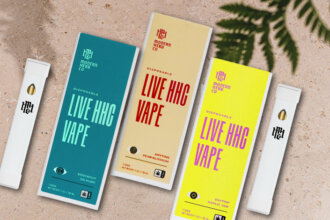Bacteria could move easily from the chopping boards, utensils, and food. In fact, a lot of people don’t realize that it’s serious, and it’s until the time when they are dealing with running stomachs because of food contamination.
No wonder why restaurants, food sellers, and servers should undergo a food handler certificate Illinois or whatever state they belong to. And did you know that one good place for the spread of bacteria is the refrigerator? A place where we store most of foods after right after we shop.
Cross-contamination of food that are stored in the fridge could lead to serious and crucial health problems like exposure to food poisoning and allergens. The good thing is that there are ways we could prevent food contamination in a fridge. Because even if an individual doesn’t have a food handler certificate Illinois or wherever they are, they should know it.
Understanding Food Cross Contamination
Before we discuss the ways and causes to prevent cross-contamination, it’s very important that you understand what it really means and how it poses a threat to health. Cross-contamination is known to many as transferring disease-causing microorganisms like viruses and bacteria from one food to another.
It could actually lead to having foodborne illnesses. The cross-contact that leads to serious cross-contamination is usually used through not washing of the cutting boards and all other kitchen tools.
Examples of Food Contamination in a Fridge
Here are some examples of food contamination that could happen in your fridge. These will give you a better understanding of how easy it is for the contamination to occur.
Cracked Containers
Did you know that cracked containers that contain food could leak onto other food items in your fridge? With that, another food item would now be contaminated will whatever food allergen is in the cracked container.
Know that allergens aren’t destroyed during the process of cooking. So, if a food item is prepared and served to a customer with peanut allergies, it could lead to a life-threatening allergic reaction.
Accidental Breaking of Plate in the Fridge
A person who stumbled and broke the plate in the walk-in cooler is another example of food contamination. There are uncovered containers of the pre-cut fruits on the fridge’s bottom. Even a tiny shard of glass could land in the fruit, and it will be served to people. With that, it could cause an injury.
Bacteria and Microorganisms that Grow in Refrigerator
Many types of bacteria and even other harmful microorganisms could survive and grow in the refrigerator. One example is the listeria monocytogenes bacteria that grow at temperatures as low as 0°C.
One example is having a tray of ground beef stored above the container. The juices from the beef could drip onto desserts that are ready to eat. And if the contaminated pudding is served to the customer, they could seriously get ill with food poisoning.
Cleaning the Fridge with Chlorine
Another is someone cleaning the fridge with a chlorine bleach solution in a spray bottle. If boxes of fresh produce remain uncovered on one of the shelves being cleaned, then there’s a big chance that the solution will contaminate the produce.
Preventing Food Contamination in a Fridge
Even if you don’t work in the food industry, handle food storage, or haven’t obtained a food handler certificate Illinois or other state, you can still practice and prevent food contamination.
Using the right products, you can prevent cross-contamination and keep the food safe for cooking. Read on for more guidelines when storing food in the refrigerator.
Storage
You should always keep dairy products and raw meat in a well-stored portion. They should be sealed tightly and in sturdy containers to avoid any contact with other food.
You can also store the raw meat by having it wrapped properly. That way, the meat will ensure that it will not drip fluids to all other food items. On the other hand, dairy products must be stored in tightly sealed containers because they can be good in culturing ground for the bacteria.
It’s very important to properly store dairy products to prevent any spillage in the refrigerator. This will prevent cross-contamination from happening.
Following Recommended Order
When you store food, you must follow a recommended order. It’s usually based on your cooking temperature of food items. Through this, storing your food in correct and organized order from top to the bottom will likely prevent cross-contamination.
From the top, you must store some ready-to-eat food items, following the seafood, then some cuts of beef and pork, ground meat, fish, and whole poultry.
Portions for Fresh Fruits and Vegetables
You should also keep your fruits and vegetables away from meat products. If possible, you should store meat products in separate refrigeration units in the fridge; the most preferable is the freezer.
Keep the raw foods from other foods ready to eat because you should prevent cross-contamination. Wash the fruits and vegetables before storing them because it helps remove some disease-causing micro-organisms. Keep in mind that fruits and some vegetables can be eaten raw and proper hygiene must be maintained.
Wrapping Up
Preventing cross-contamination in a fridge is just as simple as cleaning, regular maintenance, and storing food properly. Knowing how to keep the fridge clean and organized even if you’re not working in the food industry, nor do you have a food handler certificate Illinois, will help reduce the chances of health risks and the food we eat.














